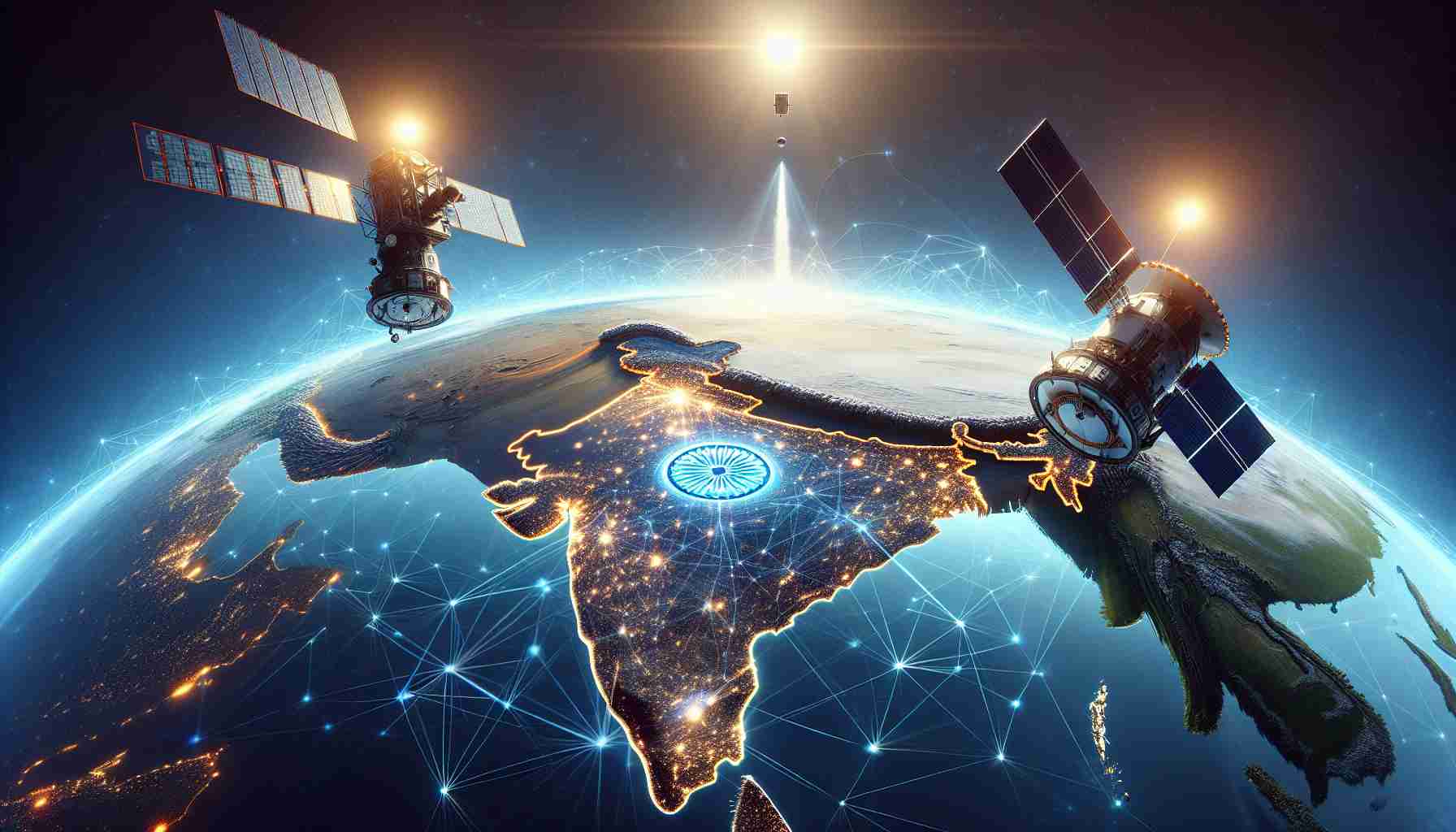
Viasat has marked a significant milestone in satellite connectivity by successfully showcasing direct-to-device (D2D) technology in India, collaborating closely with Bharat Sanchar Nigam Limited (BSNL). During the recent India Mobile Congress, the two companies demonstrated an innovative two-way messaging system that operates via Viasat’s advanced Geostationary L-band satellites.
Utilizing a standard Android smartphone equipped for non-terrestrial network communication, attendees witnessed the seamless transmission of messages. This groundbreaking event is considered a historic first in the Indian telecommunications sector. A senior executive from BSNL emphasized that this technology has the potential to drastically improve direct communication channels for essential services, enhance disaster response efforts, and increase connectivity in remote areas across India.
Viasat aims to expand the reach of satellite services, not just for consumers but also for Internet of Things (IoT) devices, through their collaborations in the industry. A key technical expert highlighted that the introduction of D2D technology could significantly lower the barriers to accessing satellite connectivity in a nation where many still lack dependable terrestrial options.
Looking ahead, there is optimism about D2D technology reshaping India’s industrial landscape. As it could potentially lead to greater efficiency, sustainability, and safety within supply chains, along with improving automotive functionality and maintenance systems.
Viasat and BSNL: Pioneering Satellite Connectivity in India
In an era where connectivity is paramount, Viasat and Bharat Sanchar Nigam Limited (BSNL) are at the forefront of a technological revolution in India. Their collaboration is not just a partnership; it represents a significant leap towards enhancing connectivity across vast and underserved regions of the country.
What is Direct-to-Device (D2D) Technology?
Direct-to-device technology allows users to communicate directly with satellites using their devices without the need for traditional ground stations. This innovation enables satellite communication to reach areas where conventional network infrastructure is either insufficient or entirely absent.
What are the key implications of D2D technology?
1. Enhanced Disaster Response: In times of natural disasters, when terrestrial networks often fail, D2D technology ensures that critical communication lines remain open. This capability can facilitate emergency services in conducting rescues and coordinating relief efforts.
2. Social Upliftment: By providing reliable connectivity in remote areas, D2D could empower marginalized communities, leading to better access to education, healthcare, and government services.
Key Challenges and Controversies
1. Regulatory Hurdles: As satellite communications expand, regulatory frameworks in India will need to adapt to accommodate new technologies. This can lead to delays in implementation and operational complexities.
2. Competition with Terrestrial Networks: The roll-out of satellite connectivity may pose challenges to existing telecommunications services in urban areas, leading to potential market disruptions.
3. Affordability and Accessibility: While satellite technology holds immense promise, there are concerns regarding affordability for low-income users, which could exacerbate the digital divide.
Advantages of Satellite Connectivity
– Wider Reach: Unlike traditional mobile networks, satellite connectivity can cover vast geographical areas including remote and rural locations.
– Scalability: Satellite services can be rapidly deployed to meet increasing demand without the need for extensive ground infrastructure.
– IoT Integration: The ability to connect IoT devices in challenging environments can foster innovation in agriculture, logistics, and environmental monitoring.
Disadvantages of Satellite Connectivity
– Latency Issues: Signals take longer to travel to satellites than to ground-based towers, which may affect real-time communication.
– Weather Sensitivity: Satellite signals can be disrupted by atmospheric conditions such as heavy rain or storms, leading to intermittent connectivity.
– High Initial Costs: The initial set-up for satellite communication systems and devices can be expensive, limiting widespread adoption.
Conclusion
The partnership between Viasat and BSNL heralds a new era of satellite connectivity in India that promises to bridge communication gaps and inspire growth in various sectors. While there are undeniable challenges to overcome, the potential advantages for millions of users make this initiative a compelling development in the telecommunications landscape.
For further information on satellite and telecommunications in India, visit BSNL Official Site and Viasat Official Site.



